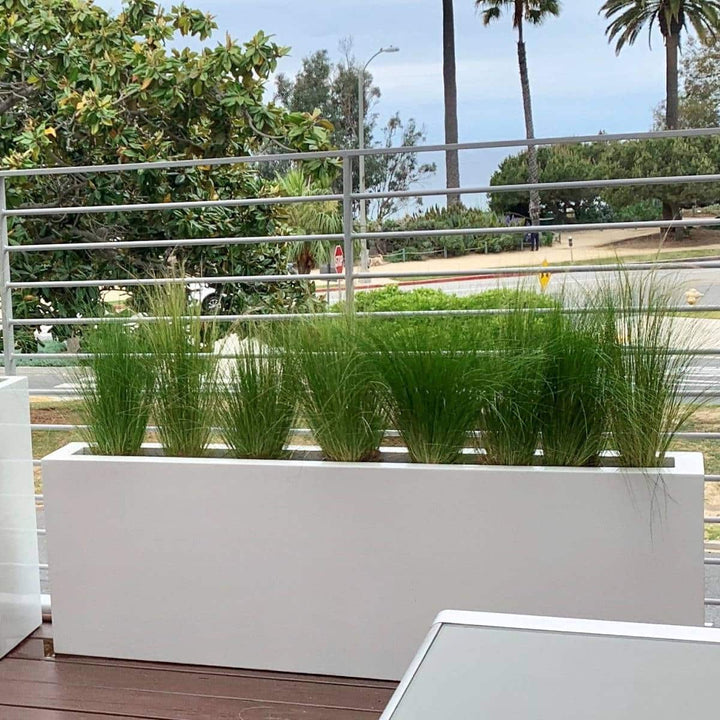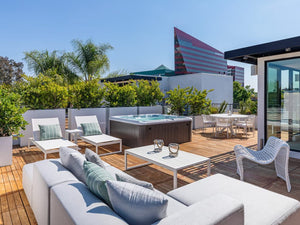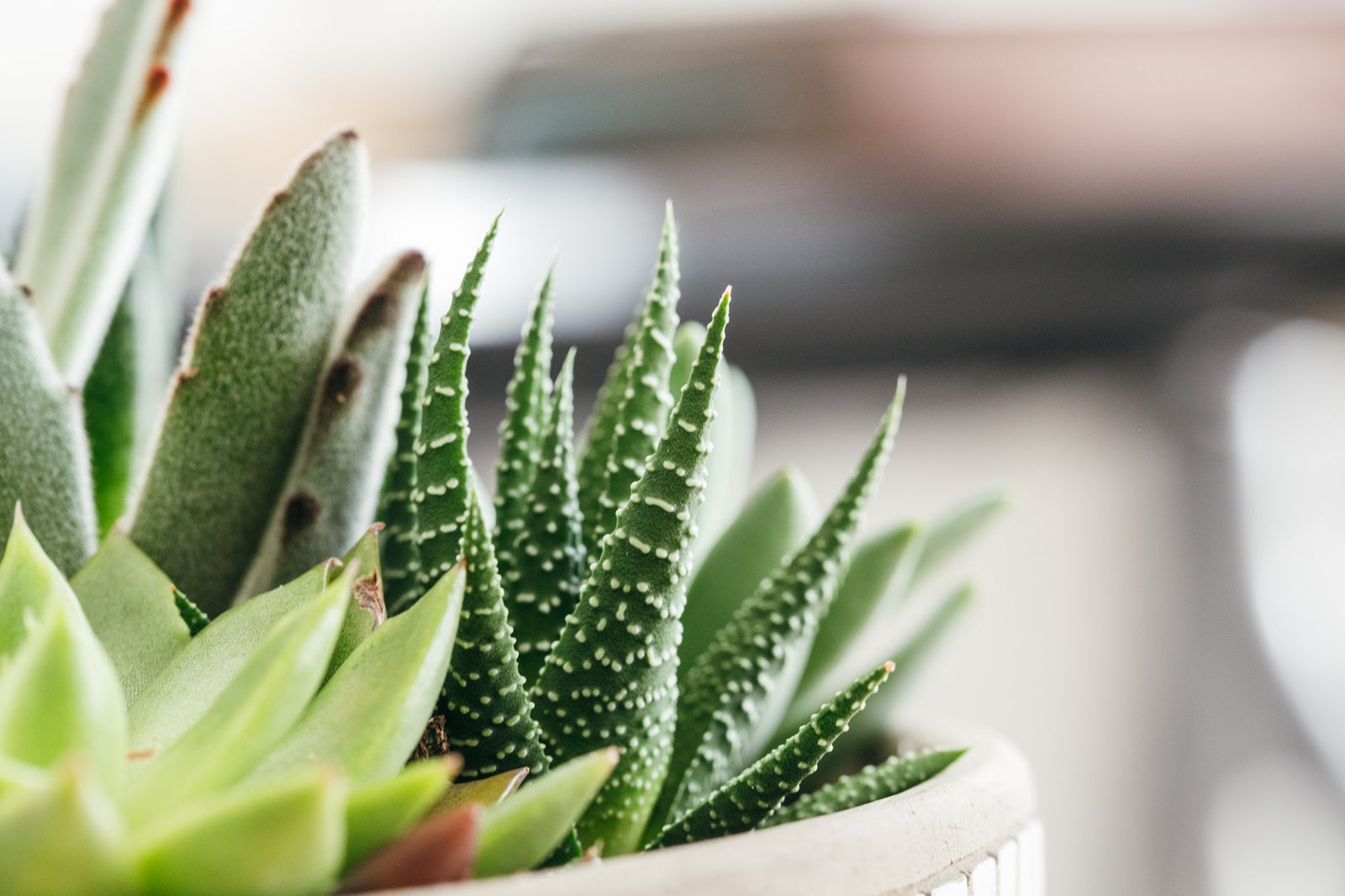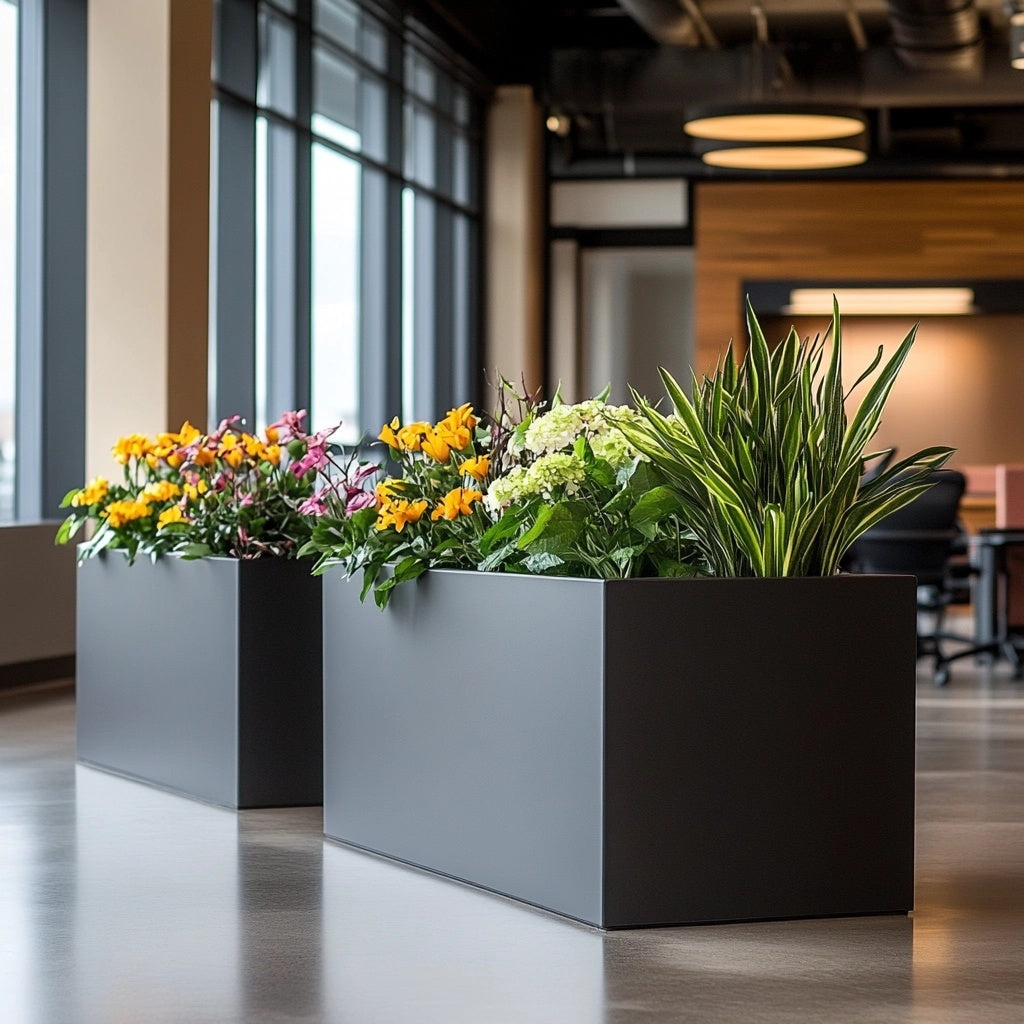See more in our Commercial Planter series
Even if you don't know a lot about gardening, one thing you're probably aware of is the fact that most indoor plants require a certain amount of natural sunlight if they are to grow into beautiful, flowering plants. However, for any landscape architect, interior designer, or prospective homeowner, one common problem with growing plants indoors is that sometimes you just can't find spots that receive ample sunlight for proper plant growth. This is where natural light gives way to indoor grow lights and you need to start asking questions like how many lumens do my plants need? Well, let's find out!
This article will focus on all your questions about grow lights--whether that be fluorescent lights, led lights, a light bulb, or how about blue light? By diving into this topic, we'll be able to answer the question posed in the previous paragraph, along with any others you might find yourself asking as you read.
To begin, we're going to start off by defining lumens. From there, we'll look at the various aspects of using grow lights. Sections will be separated into topics such as when should you use grow lights, how to choose the right grow lights, to a list of a few low-light houseplants and high-light houseplants. Finally, we'll finish off with a roundup of common FAQs on this topic.
Looking for gorgeous pots for your indoor plants? See our luxury & stylish collection of Indoor planters !
What Are Lumens?
As stated, let's start with the basics. According to How To Geek , a lumen is a scientific unit that represents the visible light output of a light source. The brighter the light source, the more lumens it produces.
Denoted by the symbol "lm", a lumen is different from a watt in that a watt measures energy output while a lumen measures light output. To make that even more digestible, lumens equal brightness.
Look on the back of any light bulb packaging then and you'll find the specifications for both lumens and watts. To find out what the most efficient light bulbs are, you can check out a light bulb's lumen/watt reading. Essentially, higher lumens per lower watts are what you're after.
Now you know what lumens are, let's find out what situations would warrant the usage of grow lights.
Want some gardening inspiration? Take a look at these 9 Container Gardening Trends !
When Should You Use A Grow Light?
As you might've guessed, the use of a full spectrum grow light is advisable when your plants aren't getting enough light from other sources. While outdoor plants thrive because they are able to bask in the sun, indoor plants have a much harder time getting proper light fixture.
A situation like this might arise when...
- A property just doesn't receive much sunlight.
- Windows don't let in enough light.
- The climate or weather affects the amount of light received.
In such circumstances, it's a smart choice for the livelihood of your plants to invest in grow lights. This will then make it possible to regulate how much light an indoor garden gets, which is essential for healthy seedling and plant growth.
More on An Indoor Container Garden
How Do You Choose The Right Grow Light?
Once you recognize the fact that your indoor plants aren't receiving enough sunlight, you can then go about getting a grow light. Unfortunately, this is where the subject often becomes a bit tricky for most.
As we're all aware, there's no singular type of light bulb that satisfies every need for lighting. Ever since the first bulb was invented, the technology has made leaps and bounds. Now if you go into any electronics store, you'll find fluorescent lights, led lights, blue lights, ambient light, artificial light, energy efficient light and all sorts of other nifty choices that frankly, confuse more than offer clarity.
In an effort to the provide this clarity, here are some pointers to remember:
- The amount of lumens per square foot you'll need in order to effectively provide light for indoor plants are around 400 - 1000 lm. Choose a light bulb that offers this much but remember, this is a general guideline--Some plants need over 2000 lm!
- Fluorescent tubes are generally considered the best plant grow lights. They are made up of a collection of led light, each of which is a different color, from blue light, red light, to green light. This provides indoor plants with a full spectrum of color, mimicking conditions outdoors.
- How intense light is is also something to keep in mind. More intense light will mean placing the plants further away from the source as opposed to milder lighting.
- The two most common bulb types for grow lights are CFLs (compact fluorescent lamps) and HID (high intensity discharge) bulbs. CFLs are considered better for their energy efficiency and longer life span, but again, consider your plant's individual needs.
Now you have a better understanding of how to choose the right grow light, let's take a look at a list of house plants that need less light and those that need a lot.
Want to mix and match plants? Read up on these 7 Plant Combination Ideas
How Much Light Does Your Plant Need?
Low-light Houseplants
Plants with a low light spectrum are ideal for the rookie gardener, or for someone who just wants a plant that doesn't need to be fussed over. Some options of these are...
- Snake plant
- English Ivy
- Golden Pothos
- Zz plant
- Philodendron
High-light Houseplants
On the opposite end of the spectrum, how about plants that require more light? These are plants where you want to start considering an led grow light or other such grow light for effective gardening.
- Jade plant
- Hibiscus
- Papyrus
- Succulents
- Sago Palm
By knowing what species of indoor plants require more light and what don't, it's possible to make your gardening experience that much simpler. If you're someone who doesn't want to fuss over an led grow light and strange concepts like photosynthetic photon flux density, look for plants with low lighting requirements.
Want some flair with your indoor plants? Check out these 10 Small Trees For Pots
Lights For House Plants FAQs
As stated, here's a roundup of a few FAQs regarding grow lights to help clear any lingering doubts.
How long should I leave my grow lights on?
Like most questions pertaining to indoor plants, there is no one-size-fits-all answer. The best way to actually figure out how long you should leave your grow lights on is to consult your local nursery or search online for information regarding your specific plant. Each plant tends to have a certain duration of sunlight it likes, so you'll want to get as close to that as possible.
How far away from my plants should I hang my grow light?
Once again, there is no single answer for the optimal distance between your indoor plants and grow light. Some factors to then consider are plant type, grow light lumens per square foot, and wattage of said grow light. Once you know these, you can pass better judgment on the distance between your plant and its light source.
What color grow light should I get?
As briefly touched upon in the section about how to choose the best grow lights for your indoor plants, you're going to need to choose a light that has a full spectrum of color for the best results.
However, in terms of the importance of each color, blue light is undoubtedly the most important. This is because it has a shorter wavelength than other colors, which in turn allows it to penetrate into the plant's leaves. Thankfully, most grow lights tend to produce an adequate amount of blue light so you won't need to worry too much about this.
Read up on Our Materials to find out why fiberglass makes the best planters!
Elevate Your Green Space With More Expert Guide
Keep on reading for a treasure trove of guides that'll turn your living spaces into botanical wonderlands! Whether you're a plant parent at home or an interior design pro in a commercial setting, we've got you covered.
Discover the ultimate planter material that strikes the perfect balance of style and practicality - fiberglass planters . Lightweight yet durable, they effortlessly blend style and functionality. Crafted to withstand the test of time, these elegant beauties are perfect for any project. From indoor sanctuaries to outdoor marvels, fiberglass planters are the unrivaled choice for all your botanical endeavors.
 |
Miami Rectangular Planter Crafted with the island life mindset and resort living, introducing the Miami narrow planter box series to our already popular sleek models, like the Milano and Amesbury planters, delivering a high end feel while not taking up too much space and providing you with cool design style like only Miami can. View Product |
 |
Brisbane Tall Corner Planter Enhance the look of any space with the Brisbane Wide Rectangular Planter. Its versatile design allows it to function as a standalone or linear planter, perfect for both indoor and outdoor settings. View Product |
From small apartment balconies to sprawling corporate landscapes, our expert tips and tricks will help you unleash your creativity and transform any area into a lush paradise. So why wait? Dive into our series of plants & planters guides , and let your imagination run wild with the possibilities of planters!






















Olivia Salgado Sifuentes —
Excelente información!! Gracias.